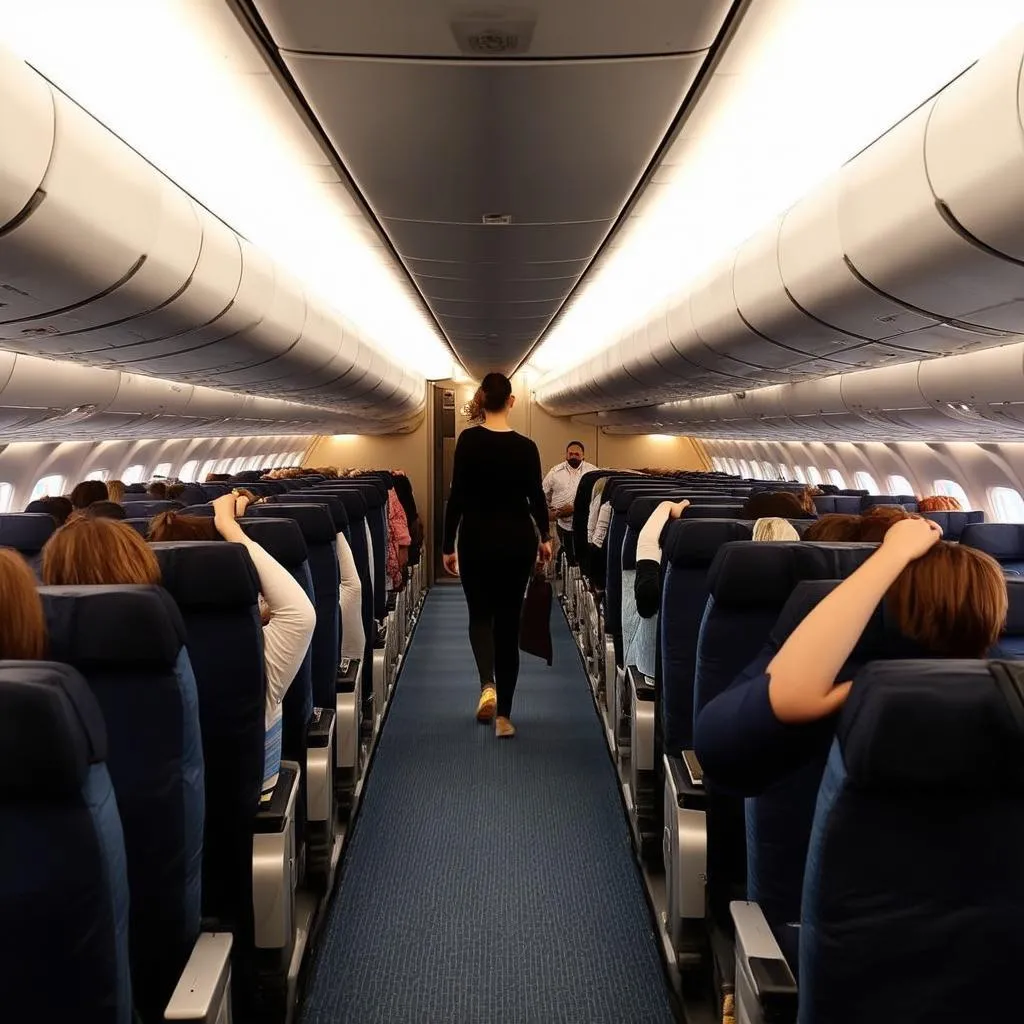Picture this: you’re finally jetting off to that dream vacation in Bali, the air thick with excitement and the scent of sunscreen. You’ve meticulously planned every detail, from the perfect itinerary to the most Instagrammable cafes. But as you settle into your seat, a nagging thought pops into your head: should you be wearing compression socks?
Traveling, especially long flights, can take a toll on your body. Many factors contribute to this, from the low cabin pressure to prolonged sitting. This can lead to a variety of discomforts, from swollen feet and ankles to more serious issues like Deep Vein Thrombosis (DVT). This is where compression socks come in.
Understanding Compression Socks and Air Travel
Compression socks aren’t just for athletes or those with existing medical conditions. These specially designed socks apply graduated pressure to your legs, promoting blood circulation and helping prevent several travel-related issues.
How Compression Socks Work
The magic of compression socks lies in their graduated pressure. They’re tightest at the ankle and gradually loosen as they go up your leg. This pressure gradient:
- Improves blood flow: It encourages blood to flow back up towards the heart, preventing it from pooling in the lower legs.
- Reduces swelling: By compressing the tissues, they minimize fluid buildup, a common cause of swollen feet and ankles during flights.
- May prevent DVT: While the risk is low for most travelers, compression socks can be an additional preventative measure against DVT, especially for those at increased risk.
 Woman wearing compression socks on an airplane
Woman wearing compression socks on an airplane
So, Are Compression Socks Really Necessary?
The short answer is: it depends. While not everyone needs compression socks for air travel, they can be highly beneficial for many. Consider these factors:
- Flight duration: The longer the flight, the more your circulation is affected. Flights over 4 hours generally warrant considering compression socks.
- Personal risk factors: If you have a history of circulatory issues, are pregnant, or have other risk factors for DVT, compression socks are highly recommended. You can read more about the safety of traveling while pregnant on our website. [link to: https://travelcar.edu.vn/is-it-safe-to-travel-when-pregnant/]
- Comfort level: Even without specific risk factors, some people find compression socks incredibly comfortable for air travel, minimizing leg fatigue and swelling.
When to Consult a Doctor
It’s always a good idea to consult your doctor before wearing compression socks, especially if you have any underlying medical conditions. They can advise on the appropriate compression level for your needs.
Choosing the Right Compression Socks
Not all compression socks are created equal. Here’s what to consider:
- Compression level: Compression socks come in different levels, measured in mmHg (millimeters of mercury). For air travel, 15-20 mmHg is usually sufficient.
- Material and fit: Look for breathable, moisture-wicking fabrics for optimal comfort on long flights. Ensure the socks fit snugly but not too tightly.
- Style: Compression socks are available in various colors and patterns, so you can find ones that suit your style.
Tips for Wearing Compression Socks
- Put them on before your flight: Don’t wait until you’re on the plane to wear them. Put them on at home to maximize their benefits.
- Stay hydrated: Drink plenty of water throughout your flight to support circulation.
- Move your legs regularly: Get up and walk around the cabin or do some simple leg exercises in your seat to further improve blood flow.
 Passengers walking in the aisle of an airplane cabin
Passengers walking in the aisle of an airplane cabin
Frequently Asked Questions
Q: Can I wear compression socks if I’m already experiencing leg swelling?
A: It’s best to consult your doctor in this case. They may recommend specific types of compression socks or other measures.
Q: Are there any side effects of wearing compression socks?
A: Compression socks are generally safe for most people. However, they can cause minor discomfort, skin irritation, or (in rare cases) allergic reactions. If you experience any unusual symptoms, discontinue use and consult your doctor.
Travel with Comfort and Peace of Mind
Ultimately, the decision of whether or not to wear compression socks is a personal one. By understanding the benefits, considering your individual needs, and following the tips above, you can make an informed choice that allows you to travel with optimal comfort and peace of mind.
Remember, a comfortable journey paves the way for incredible adventures! Safe travels!
For more travel tips and advice, visit travelcar.edu.vn. We offer a wealth of resources to help you plan the perfect trip, from packing guides to destination inspiration.
Discover the world with confidence. Explore. Dream. Discover.